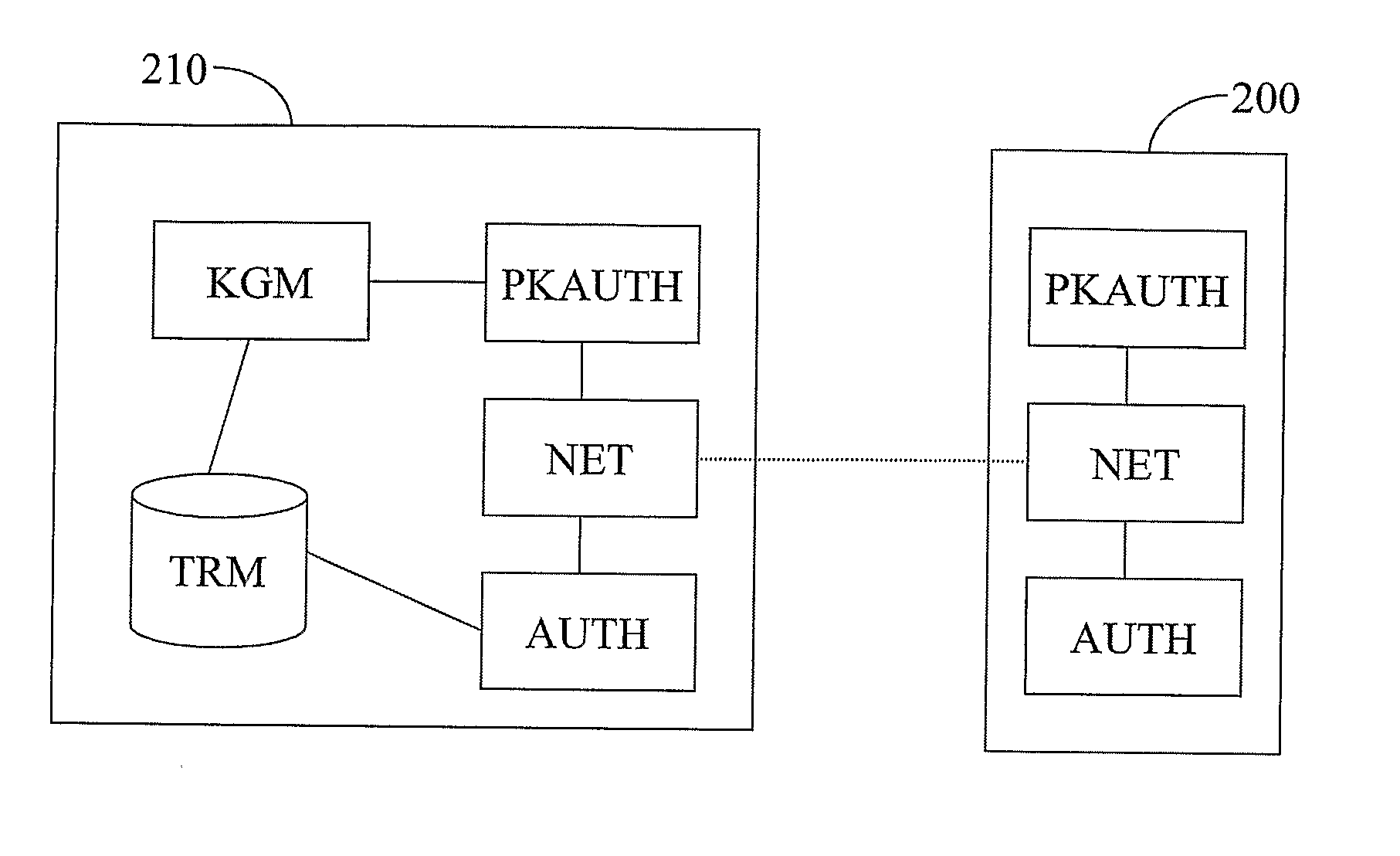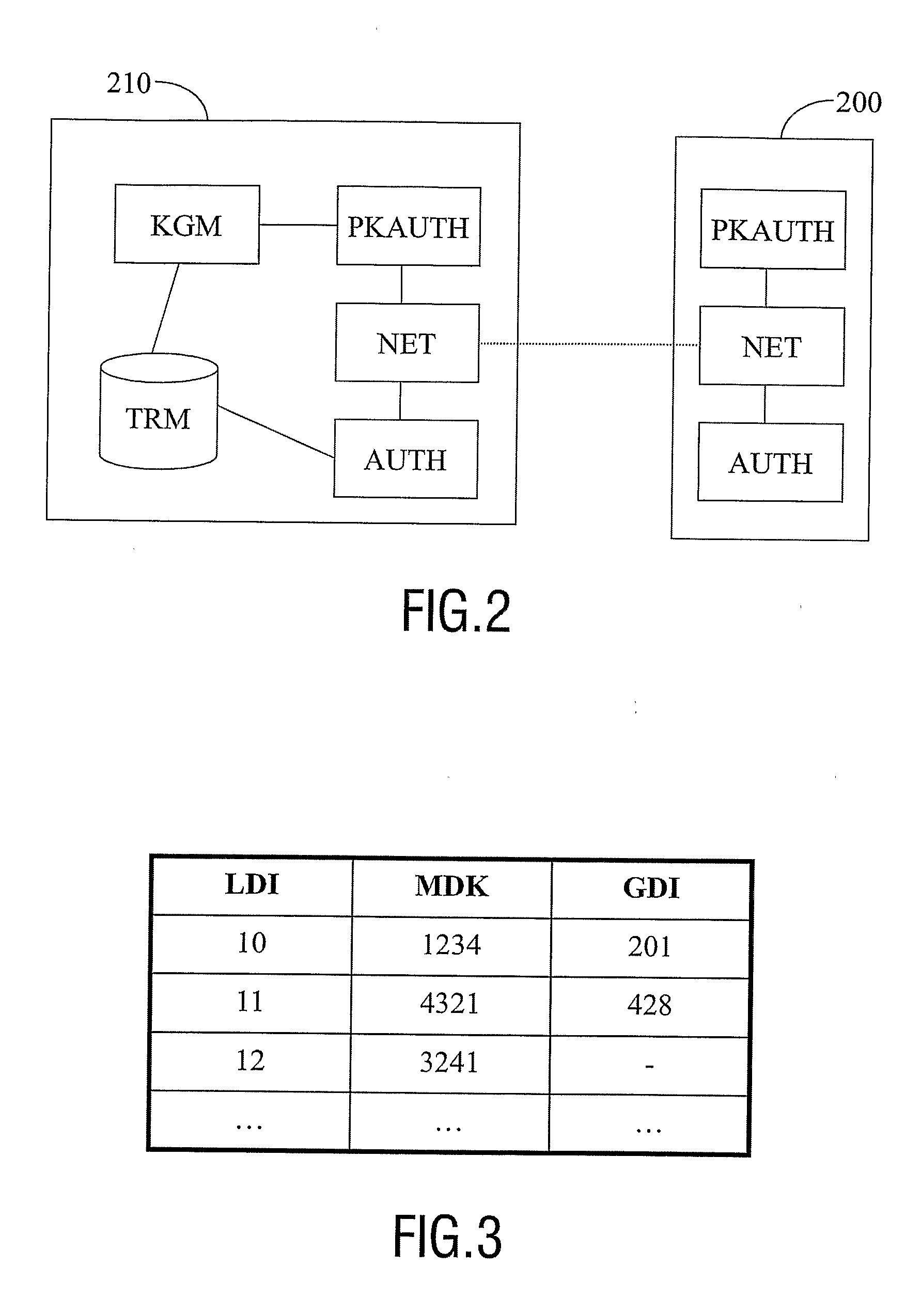Domain manager and domain device
a domain manager and domain technology, applied in the field of domain managers and domain devices, can solve the problems of slow implementation, unimportant identity of a given device, and illegal copying and distribution of copyrighted digital content, and achieve the effect of fast software implementation and efficient revocation mechanisms
- Summary
- Abstract
- Description
- Claims
- Application Information
AI Technical Summary
Benefits of technology
Problems solved by technology
Method used
Image
Examples
Embodiment Construction
[0031]FIG. 1 schematically shows a system 100 comprising devices 101-105 interconnected via a network 110. In this embodiment, the system 100 is an in-home network that operates as an Authorized Domain. A typical digital home network includes a number of devices, e.g. a radio receiver, a tuner / decoder, a CD player, a pair of speakers, a television, a VCR, a tape deck, and so on. These devices are usually interconnected to allow one device, e.g. the television, to control another, e.g. the VCR. One device, such as e.g. the tuner / decoder or a set top box (STB), is usually the central device, providing central control over the others.
[0032] Content, which typically comprises things like music, songs, movies, TV programs, pictures, games, books and the likes, but which also may include interactive services, is received through a residential gateway or set top box 101. Content could also enter the home via other sources, such as storage media like discs or using portable devices. The so...
PUM
 Login to View More
Login to View More Abstract
Description
Claims
Application Information
 Login to View More
Login to View More - R&D
- Intellectual Property
- Life Sciences
- Materials
- Tech Scout
- Unparalleled Data Quality
- Higher Quality Content
- 60% Fewer Hallucinations
Browse by: Latest US Patents, China's latest patents, Technical Efficacy Thesaurus, Application Domain, Technology Topic, Popular Technical Reports.
© 2025 PatSnap. All rights reserved.Legal|Privacy policy|Modern Slavery Act Transparency Statement|Sitemap|About US| Contact US: help@patsnap.com



